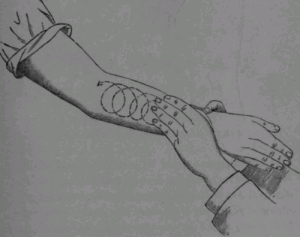Tsing, Anna L. 2005. Friction: An Ethnography of Global Connection. Princeton: Princeton University Press.
Anna Tsing’s Friction: An Ethnography of Global Connection looks at the Indonesian rainforest as a space of “awkward engagement” (xi) involving an ensemble cast of characters, ranging from nature lovers and illegal loggers, to crony capitalists and indigenous activists along with almost everyone else in between. “Awkward” also defines her metaphorical-analytical tool of “friction,” which she defines as the “awkward, unequal, unstable, and creative qualities of interconnection across difference” (4). This implies a methodological challenge across space that Tsing pulls off gracefully by showing the interconnections between people and places as far afield and different as Canadian investors and a Filipino mining prospector in the hot rainforests of Indonesia.
Her interest in seeing how interconnections emerge across difference brings an examination of universals to center-stage of her study. Her verdict on the politics of universals—for instance, human rights and environmental discourses—is mixed in that they present risks of both pitfalls and positive potential. Both “success” and failure are risks, but they are risks that Tsing decides are worth taking. “This mingling of despair and hope,” which are embodied by diverse actors in her account, “reformulates representations of global capital, remaking the culture and politics of globalization” (270). In this way, globalization is not conceived as an inexorable and insatiable bulldozer of all hopes and difference, but open and formed by contingency as well as the push and pull of awkward engagement.
Considering the devastation and destruction of rainforest habitats in addition to the resulting sense of despair communicated by some of her interlocutors, Tsing’s conclusion is rather optimistic, but as her ethnography show not in an unfounded way. I kept thinking of Weber’s description of politics as the “slow, powerful drilling through hardboards” while reading the book. Besides this patient politics, Tsing also highlights the contingency of it all and is continually surprised by the diverse articulations—in Stuar Hall’s sense—of activists in transforming and redefining themselves. For instance, under the strictures of the New Order there was the potential that was increasingly realized by what began as a tepid environmental movement—seen as anti-political enough to conduct its slow and steady work. This movement in which “questions of freedom welled up” and that articulated “ideas of human rights, farmers’ rights, and indigenous rights” opened up spaces for the later proliferation of other movements.
But what these movements have to contend with is the ferocious combination of legality and illegality, big and small companies and entrepreneurs that advance “privatization through military and political force, displacing earlier residents’ resource rights” (21). The first few chapters on frontiers and economies of violence are particularly relevant for my own work.
“Built from historical models of European conquest, frontiers create wildness so that some—and not others—may reap its rewards. Frontiers are unregulated because they arise in the interstitial places made by collaborations among legitimate and illegitimate partners: armies and bandits; gangsters and corporations; builders and despoilers. They confuse the boundaries of law and theft, governance and violence, use and destruction” (27).
She adds, “The frontier, then, is not a natural or indigenous category. It is a traveling theory, a foreign form requiring translation” (31). “The frontier is made in the shifting terrain between legality and illegality, public and private ownership, brutal rape and passionate charisma, ethnic collaboration and hostility, violence and law, restoration and extermination” (33).


Pingback: Deadwood as Geography | Territorial Masquerades